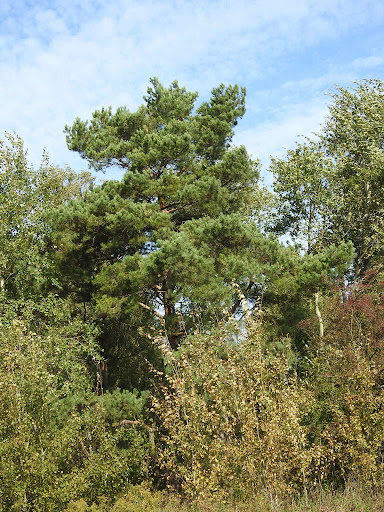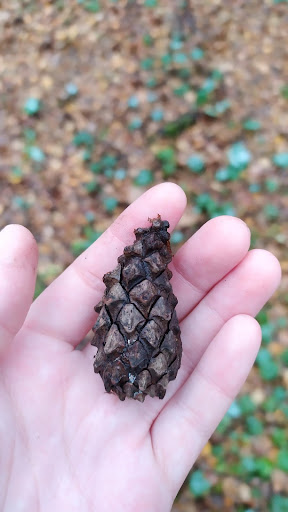Scotch Pines are large, evergreen, coniferous trees that can grow up to 25 m tall, and have an irregularly shaped crown. They have twisty needles in bundles of two, which are 4–6 cm long, blue-green, and sharp-pointed. The bark of its upper branches and trunk are orange-brown, and its cones are 3–6 cm long.
This species grows in many soil conditions and different moisture levels, and requires sunlight. It can escape into open woodlands, wetlands, and barrens, which threatens native biodiversity by outcompeting species and modifying ecosystems.
Scotch Pines were first used in Canada during the 1920s for reforestation of abandoned agricultural lands. They became more widespread later, when they were used as Christmas trees, for landscaping, and as shelterbelts.

Three versatile, native pine trees grow in Nova Scotia: White Pine (Pinus strobus), Red Pine (Pinus resinosa) and Jack Pine (Pinus banksiana).
Pine needles about 4 to 6 cm long, bark of upper tree often orange.


This species is the national tree for Scotland – hence its common name.
Use native or non-invasive pine trees; encourage government, industry, and your fellow citizens to do everything in their power to prevent the trade and movement of Scotch Pine; pull out seedlings; cut down bigger trees, and burn cones on site. If you find Scots Pine, report it to the Invasive Species Alliance of Nova